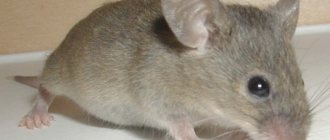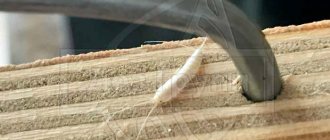Despite the emergence of a mass of means and methods aimed at exterminating rodents in the house, a considerable number of ordinary people prefer to use effective and time-tested methods, for example, a device for catching mice, traditionally called a mousetrap.
To catch small rodents, it is important to know: how to properly load a mousetrap, choose the appropriate bait and place to install the trap. Devices of equal efficiency can be purchased at specialized retail outlets or made with your own hands.
How to charge
To successfully hunt rodents that have settled in your home, it is important to know how to use a mousetrap. The most effective devices are spring ones. In this case, you can choose the option for disposable or reusable use.
In the second case, after each rodent hit, you will have to remove the deceased mouse yourself.
If there are a large number of rodents in your home, it is recommended to use special inexpensive kits that include three to five disposable or reusable devices.
Mousetraps of this type should be placed in places inaccessible to children and pets.
A common mistake most people make when threading a mousetrap is setting too much spring. In this case, the device only works when strong pressure is applied to the bait, which can reduce fishing efficiency.
It is important to place the gifts prepared for mice in such a way that the mousetrap is triggered even with slight contact.
To charge the mousetrap, you need to follow the following algorithm:
- First, you need to place a treat, prepared in advance for rodents, on the trigger, at one end of which there is a spring or a so-called clip.
- Next, place the holder on the same hook, which must be carefully inserted into the corresponding groove of the trigger mechanism.
- It is recommended to carry out all actions with rubber gloves; you should also not touch the mousetrap with bare hands before using the device. This is due to the fact that the smell of a person can alert a mouse.
- The installation of metal mousetraps is somewhat different from the actions performed with wooden devices. To set such a trap, you need to direct the metal pin in the direction opposite to the location of the spring. Pull the bracket in the same direction, and then install the pin on it.
If the device is disposable, do not attempt to reuse it. After catching a rodent using such a mousetrap, you must immediately get rid of the trapping device.
Features of choosing bait
An important point in pest control is the right bait. No matter how effective and expensive the trap is, mice cannot be attracted without tasty food. There is an opinion that mice are crazy about cheese, but in fact, among the delicacies of rodents there are completely different products.
Lures that will not leave any mouse indifferent:
- fried bread in vegetable sunflower oil;
- fragrant baked goods and other flour products;
- pumpkin and sunflower seeds;
- salted or smoked lard, a slightly charred product is also suitable;
- peanut;
- smoked sausage.
The better the bait is selected, the higher the likelihood that the pest will be caught.
For mousetraps that do not have a trigger, it is recommended to use commercial baits. They are made from ordinary products and odorous additives. The strong aroma will attract mice.
If the bait is made from the wrong products, it will be impossible to catch mice. Through trial and error, you can determine what uninvited guests like. It is also worth making sure that human food is not available to pests, otherwise they will not be interested in the bait in the mousetrap, no matter how tasty it may be.
High-voltage mousetrap - what it is and how to use it:
Touch the trap or the food in it only with gloves. Mice and rats are wary of human odor, so they may be repelled by bait that has been touched by a person.
Where and how to install
It is recommended to place a mousetrap in a place where rodents most often live, for example, in the kitchen. This must be done using rubber gloves so that the human smell does not scare off the mice.
Can be installed in the following areas:
- In the space under the furniture.
- Wall voids, if any.
- If there are pantries, a basement, a cellar or other premises that are intended for storing food, the installation should be done there.
- You can also place mousetraps on cabinet shelves that are needed to store food supplies.
If there are no specific areas, you can place the mousetrap where it will not pose a danger to pets and children. Sooner or later, rodents attracted by the scent of the bait will fall into the trap.
Installation locations
In rooms where children and pets live, it is better not to catch mice with open-type devices, since there is always a chance that what is caught will not be a rodent at all. Traps with a loop are also not a good option - the thin wire easily cuts the skin. In these cases, it is better to install a mousetrap-cage or a model of similar action made of plastic pipes and boxes.
You can catch rodents anywhere in the apartment, even in remote corners you will still encounter them from time to time, but for greater efficiency, the chosen mousetrap is installed along the routes of pests from nests to products.
Mice prefer to hide under cabinets, in drawers, between furniture, in floor and wall cavities.
Modern renovation with an abundance of drywall is a dream for any rodent. The nest can also be located outside the house - in an adjacent shed or garage, in the attic, in the basement, in bushes or a pile of branches near the wall, in cracks in the foundation. Then burrows lead into the room - small holes near the floor. You can also determine where mice are by looking at the excrement left behind and spoiled food.
Traps are placed near these places along baseboards and between furniture. It is better if there are several mousetraps, since mice are caught mainly at night, and it will not be possible to immediately recharge the devices.
How does it work
The operating principle of an ordinary wooden mousetrap is extremely simple. If the device was installed according to the required rules, which require holding the metal spring in a cocked state, an attempt by a mouse to eat or drag away the bait will cause the frame to slam shut.
To properly load the trap, it is important to practice in advance. For example, a mousetrap will not work if the hook is not on the edge of the rod.
It should be noted that structures of this type are not humane towards rodents, and also have a low level of hygiene. To use a mousetrap for a long time, you need to thoroughly wash it after each animal you catch.
To prevent this from happening, it is recommended to purchase a different type of trap.
DIY mousetrap from a plastic bottle with oil
Not everyone will catch a pest with the goal of killing a living creature, even if not through direct contact. The most humane way to catch a rodent without harming it is a bottle trap. The mouse can then be released somewhere away from the house.
Bait
This is the most important component of any trap. After all, if the mouse doesn’t want to get there, the mechanism won’t work. Even the most successful design will be useless without the appropriate bait.
It’s worth clarifying right away that the notorious passion of rodents for cheese is nothing more than a stereotype. They treat this product no better than any other. Mice are much more attracted to raw seeds. To enhance the effect, you can lightly fry them in sunflower oil. Bread dipped in sesame oil also works great. You can use crackers, lard or even popcorn.
A do-it-yourself mousetrap made from a bottle can be of different types. Let's consider the simplest and most common option.
Tools and materials
- plastic bottle - 2 l;
- iron wire;
- stationery knife;
- bait;
- sunflower oil.
Step-by-step manufacturing instructions
- Cut the bottle, but not exactly in the middle, but closer to the neck (divide the container by 2/3).
- Remove the plug.
- Turn the top over and insert the narrow part down.
- You can use a stapler, glue or wire to secure the edges.
The finished structure is shown in the photo.
How to make other types of mousetraps at home: instructions
Human ingenuity is limitless. He can put almost any object to good use. All you need is detailed instructions, available tools and your own ingenuity to get rid of mice.
From a bucket of water
This option allows you to catch several rodents at once without reloading, but we are not talking about humanity here. The presence of water in the container already suggests that the caught animal will drown. The structure should be placed near the pest’s habitat. Attracted by the smell of the bait, the mouse will climb up a special “slide”, but when it steps on the bottle, it will lose its balance and fall into the water.
What you will need for the craft:
- a bucket made of any material;
- metal knitting needle;
- tin can or plastic bottle;
- two small boards;
- scotch;
- bait.
- Fill a third or half of the container with water.
- Pierce a bottle or jar with a knitting needle. Design the hole so that nothing prevents rotation.
- Attach the bait to the container using tape. A piece of lard would be better, as the bread will turn sour in the water.
- Place the knitting needle on the bucket.
- Place a board at each end of the rod, making a kind of bridge to the trap. A rodent will climb along them.
There is no need to constantly configure the device. A single installation and periodic updating of the bait is enough if there are a lot of pests.
Important: this option is also suitable for catching rats.
Effective Electric Mouse Trap
Not entirely simple and completely inhumane, but effective. One contact is connected to a metal grid with a fine mesh. The second one is raised above this platform and holds the bait. Peanut butter works best in this situation.
At the other end of the wire there is a plug that only needs to be connected to an electrical outlet. The discharge is enough to kill the animal. If the individual is not large, the shock force of the current may be too much. You should prepare for the fact that the electric mousetrap will become a source of unpleasant odors.
Made of wood or “Beehive”
Attracted by the aroma of food, the pest will run into the hole. Inside you will come across a thread that will block the path to food. The mouse will chew through it and cause the exit to close.
Important: to create such a mousetrap you need a certain skill in wood processing.
- wooden block - 120x90 mm, height 40 mm;
- wire;
- spring;
- drill;
- harsh thread;
- bait.
- Make a drawing on paper, marking the centers of the main positions. Transfer the diagram to the block.
- On one of the faces of the wooden block, draw a marking of a longitudinal line and two more parallel to it. There should be at least 20 mm to the front edge.
- Make through holes with a diameter of 3-4 mm and connect them with a line, deep to the middle of the hole. It will be more convenient to make small holes and then get rid of pieces of wood with a chisel or mounting knife.
- A trapping loop, U-shaped trap or flap will be lowered into the resulting slot. The latter option is being considered for a more humane solution to the problem - the animal will not be suffocated, but simply will not be able to run out. If you decide to thread the wire, you need to select a product no thinner than 2 mm in cross section. Based on 4-5 turns of the clamp and up to 70 mm at the ends. One of them is rigidly attached to the body, and the second is threaded through the loop and bent with a hook.
- Compress the spring and tighten the knot from above. This is the mechanism for triggering a mousetrap. When the mouse chews the thread, it will set the hinge or flap in motion.
- The bait is placed at the very bottom of the hole.
How to assemble a wooden mousetrap
The simplest type of device, but highly effective, is called wooden mousetraps. They are easy to install and assemble, and the results obtained will break all records. You can make a trap called “mink” yourself.
This type of device will help you quickly get rid of any number of parasites.
The algorithm for assembling a wooden device is as follows:
- First you need to prepare a wooden beam, the sides have the following values: 120 by 40 by 90. For ease of work, the workpiece must be sanded in advance using sandpaper.
- Next, three indentations should be made in the narrow side of the block, the size of which corresponds to the size of the rodent’s body. This can be done in convenient ways, for example, using a drill.
- Inside the device you need to place a noose made of strong but elastic thread or wire. The noose should be secured with a thin thread. Thick fibers cannot be used, since the operation of the structure is based on damage to the thread by a rodent.
- The threads should be positioned in such a way as to block the rodent's access to the bait located in the depths of the burrows. When trying to get to the treat, the mouse chews the threads, thereby releasing the loop, which, in fact, kills the unwary rodent.
The device can be used repeatedly. If a large number of rodents have settled at home, you need to make several mousetraps. When used correctly, they will help quickly get rid of parasite infestations.
It must be remembered that after each rodent caught, the trap should be cleaned. This must be done, despite the fact that there may be two or more holes in the block.
Video
Mousetrap in action (detailed video review)
Home mousetraps
It is not necessary to purchase a trap in a store; you can assemble this device at home. Such devices work no worse than store-bought ones. With their help, knowing how to charge a mousetrap, you can get rid of pests in the country and at home. For such a device you need things that can be found in any household.
To set a trap at home, you need to take a bucket three-quarters filled with water. So that the mouse dies quickly, you should add soap here. Then place the bucket in a place where animals gather. In order for rodents to be able to climb to the bucket, a ramp (board, panel) should be installed. Floating food is dropped into the water. Attracted by the aroma, mice will fall into the bucket and drown.
You can get rid of rodent pests using a large number of different models of traps. Using any of them you can protect your home from rodents
It is very important to start exterminating mice in a timely manner, since they are carriers of dangerous diseases. For example, it could be hantavirus, which is spread through urine and droppings
Rodents, in addition, are carriers of bedbugs and ticks, which can infect humans with Lyme disease.
For the initial stage, it is better to use homemade traps, since charging a homemade mousetrap, as well as making it, will not be difficult. This device is no less effective than expensive store-bought devices. But such a simple design can save money that could be spent on purchasing proprietary products.
Source: fb.ru
Current
Miscellaneous Miscellaneous
Using a mousetrap to catch rodents is one of the simplest but extremely effective ways to control pests.
The fact is that the use of mousetraps helps to get rid of the biggest drawback of using modern means - the death of mice in hard-to-reach places, which is often accompanied by the release of a pungent and poisonous odor.
However, in order to effectively use this simple device, you need to know the principle of operation of a mousetrap and the place where it should be placed.
How it works
The most common wooden mousetrap has an extremely primitive design. The elements of such a device are: a base made of wood, a spring, a holder, a stem and a frame.
It should be noted that mousetraps with a metal base have already appeared on the consumer market. They are convenient to use due to ease of maintenance.
When choosing traps, it is recommended to pay attention to the convenience of the device and the materials from which they are made.
Wood is a material that easily absorbs blood, as well as the waste products of rodents, which determines the low level of hygiene of such devices.
So that the mousetrap can be washed and disinfected, it is recommended to choose plastic or metal structures.
Features of installing mousetraps of different types
The installation method for the device depends on its type.
The main types of mousetraps:
- spring;
- trap;
- electronic;
- “humane”, which does not kill;
- adhesive.
It is not difficult to make a mousetrap at home.
Spring
The base of frame spring mousetraps is wooden or metal. Attached to the top is a frame into which a spring is inserted. It is fixed with a rod, at the end of which there is a hook. Pieces of food are placed on it as bait.
When the rodent takes the bait, the frame is released and slams the animal. The mousetrap can be used repeatedly. Each time it must be installed anew.
Here's how to install a spring-type rat trap:
- Place food on the hook.
- Cock the metal frame back as far as it will go.
- While still holding the frame, turn the rod with one hand and hook it onto the hook.
- Lower the frame.
For the device to work well, the hook needs to be at the tip of the rod. For a spring mousetrap, hard bait is suitable. The rat must spin a little on the hook to start the mechanism.
Traps
Traps, or mouse traps, are similar to devices for catching bears. They are distinguished by their smaller size and horizontal location. The rat trap is made of plastic, has semicircular edges with teeth at the end.
Press the clamp on the back of the trap, place the bait inside and release the clamp - this is how to properly use a clothespin mousetrap.
There are devices of this type for mice and rats. The latter are larger in size.
Electronic models
Modern electric mousetraps are the most convenient means of controlling rodents. All a person has to do is put the bait and plug the cord into the outlet. Within a second of being ingested, the rat dies from electric shock. While mechanical models may not work, electronic rat traps are always effective.
There are LEDs located outside the case that are configured for movement. They light up when a rat is caught inside.
Traps that don't kill
If you are not satisfied with mousetraps that kill a rodent, choose a more “humane” option:
The cage looks like a mesh box with a metal door secured by a spring. There is a hook inside. One end is with a bait, the other fixes the door. How it works: As soon as the mouse grabs the bait, the door slams.
A swing-type rat trap is a long pipe curved in the center. There is a door at one end of the device. The pipe is installed so that the part of the door fits tightly to the floor. The operating principle is as follows: a rodent runs into a pipe and overhangs it. The door, which was previously open, suddenly slams shut.
There are clothespin mousetraps that do not kill animals. They are more elongated than classic traps. The bait is placed deep into the device. The flaps catch the mouse when it is completely inside. Therefore, the rodent does not receive damage.
The device has a simple design. It consists of one board coated with glue that is resistant to moisture and sunlight. A bait is placed in the middle of the board. The rodent runs up to the bait and sticks firmly.
The glue is not poisonous and does not kill rodents. Therefore, after catching the pest, you should decide how to get rid of it. You will have to either kill or tear it away from the trap, which is not easy. This is the main disadvantage of glue mousetraps.
Glue traps are designed for mice. They should not be relied upon when catching a large rat.
Homemade
Making a trap at home is not difficult. A bucket, straw, bait and a board or ladder for the rodent will come to your aid.
Steps to creating a homemade mousetrap:
- Fill a container (bucket or large bottle) with water.
- Place straw on top.
- Pour in some vegetable oil for flavor.
- Put down the bait. It should be light so as not to fall under water. Grains or seeds will do.
- Place a rodent ladder nearby.
To kill rats in the basement, use an iron barrel. Throw a bright-smelling bait there. The rat will smell the smell, run into the barrel, but will not be able to get out due to the concave edges of the container.











